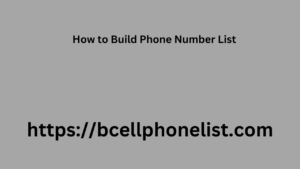A Landing page, as the word says, is a “landing page”, this means that your visitor will not find it in the navigation menu of your site (except in some cases), but will land there directly, through a link shared on social media, in a newsletter or through a search result on Google.
The landing page is a web page that does not tell the life, death and miracles of your business, but focuses on a particular product or service . It is a sort of “navigable advertisement”, an active point of contact with your audience.
But let’s take a closer look at the types of landing pages that exist and why you might need them.
Landing pages and sales pages
There are basically two types of Landing Pages:
1) Conversion landing page What is the Landing Page you would like to land on and what does it look like?
It is the most common and has the goal of converting an anonymous visitor into a qualified contact ( Lead ) to add to your database. This process is called Lead Generation (we talk about it in more detail in this article ).
The most common conversion landing page examples can be expressed with formulas such as:
I offer you a free resource to download in exchange for your data (this resource is called a “freebie”)
I’ll give you a 10% discount if you sign up for my newsletter
Landing page exampleIn this type of landing page you will have to offer valuable content , for which the user is willing to give you, with an act of trust, personal information about themselves.
We are at an initial or intermediate stage of the buyer’s journey (the “user journey”): the visitor already knows you – for example if he arrives from the link on one of your social pages – or has just met you – for example if he has clicked on a prominent search result on search engines – ( awareness stage ).
This step will provide valuable elements to his attention ( consideration stage ), so that when he makes the purchase decision ( decision stage ), he will be able to choose you and not one of your competitors.
2) Sales landing page or “Sales page”
The sales page has the function of proposing a specific product or service to the user. We are here at an intermediate or final stage of the buyer’s journey: the landing page must provide useful elements to your user to direct him towards a decision, or it must induce him directly to purchase. This type of landing page is often reached via a link within a newsletter – for example – a consolidated point of contact for a relationship with a potential customer already acquired.
It is characterized by phrases such as:
Buy now!
75% discount for 24 hours
And the like, often leveraging a sense of urgency and opportunity.
example of a sales landing page or sales page
Sales pages (or sales landing pages) can also be reached from your site menu. These are the “Services” pages, used to detail your offer and propose the purchase.
What is the difference between a landing page and a website?
We can say with a metaphor that the website is an apartment with many rooms, each one dedicated to a specific objective (for example the home page for a general presentation and an address between the objectives of your business, the ” sales pages” in which to display and sell your services/products, a “contacts” room in which to give the user the opportunity to communicate with you, a “blog” room in which to welcome your visitors and offer them valuable content, etc.).
The landing page
On the other hand, is a studio apartment, or rather, a room rented for a special occasion (no, not a party ;P): collect contacts and generate qualified leads, collect subscriptions to your newsletter , sell a video course, sell a consultancy, etc.
As we have seen, landing pages can exist in a “hidden” way and be advertised individually, or they can be pages of the site reachable from the menu.
Website and landing page are not alternatives, they simply have different functions
The site is your home, your proprietary environment (unlike social media, continually at the mercy of the tides of their creators and managers), the launching pad for every communication with your audience. The website , if you deal with online marketing , is a living environment, in continuous transformation . Not only to update prices and phone numbers. But above all to accompany the visitor on his journey and gradually convert him into a “customer”.
Depending on your digital marketing strategy, blogs , pillar pages , landing pages , newsletters and social channels can be linked to your site .
Each channel and each tool are suitable and pursue different objectives. Call it “ Inbound marketing ” if you want.
What an effective landing page looks like
There are two golden rules that you must always keep in mind when creating a landing page:
One page one target , one and only one objective. Which will translate into one and only one main CTA ( Call to Action ). The landing page is not a home page, it does not have to contain all the information possible and imaginable, but it must have a precise objective (“sign up”, “buy this”…) and each element within it must serve this objective .
Feel free to peruse our website if you need telemarketing services or phone number listings. Our team of qualified experts provides telemarketing services to help you reach your target audience. Other types of data processing services that how to build phone number list can be tailored to your business’s needs are also offered by us.By phone or email, you may also contact us to place an order or learn more about how we can help with your marketing.
Create a direct and essential design . Self-evident, usable.
In line with the previous phone number data point, avoid distractions: no useless elements that steal space and attention from the main objective. No decorations that get between the message and the recipient. No links that can take away from the main CTA.
To respect these two points, design buy lead your landing page from the outset so that it clearly answers these questions :
Why does your visitor really need to take up your offer, rather than doing something else or going to one of your competitors?
Why should you join right away?
What actions must the user take to get what you are offering?
Having clarified these points, let’s see what are the structural elements that make up a landing page, and where the various information should be placed.
Structure of a landing page that converts What is the Landing Page you would like to land on and what does it look like?
Alias “The Title”. Make it clear and concise. State the offer/benefit and how to get it right away. You can optionally split this two pieces of information into a title and subtitle. For example:
Title : Subscribe to our newsletter and get 10% off now
or:
Title : Get 10% off now
Subtitle : Just fill out the form and subscribe to our newsletter
Another important aspect is the coherence between the message with which you shared the link to your landing page and the title of the same. If you shared a link on social media, for example, make sure that the words you used to invite to click are the same (or as relatable as possible) as the title of your landing page. Do not disorient the user with dispersive messages.
BODY COPY (body text)
Put yourself in your visitor’s shoes, look at the page through his eyes.
Express yourself simply and effectively, both verbally and visually: use formatting, even design white spaces, so that your text is easy and pleasant to read.
Like pauses in music, white space in design determines its rhythm.
Whether it’s an image or a video, the visual is able to:
communicate complex concepts effectively and immediately , giving the perception of accessible content;
to excite – and therefore attract and induce action;
act as a trailer, visually anticipate the content , stimulating curiosity, making the offer credible, communicating reliability (“if I see it, it’s real”).
You know, you choose a book by its cover .
FORM
In the case of conversion landing pages, the form is the real focal point of the page . The place where the conversion takes place: your visitor is giving you information about themselves in exchange for useful and valuable content. Don’t waste this opportunity with gross errors that cause them to abandon the action. To this end, use these precautions to increase the conversion rate:
Adopt an “action-oriented” language , exhortative, affable but firm;
Be precise and do not use ambiguous terms: the user should not have to struggle to understand what he has to enter or what he has to click (think about the frustration you feel when you have to choose between buttons like “cancel” and “delete”, for example.
Demonstrate that you are trustworthy , clearly explain the protection you will have for the data that will come into your possession.
More tips for creating an effective landing page
As you can see, we haven’t talked about navigation menus. As we said at the beginning, your landing page should focus on one and only one goal .
The user should be able to perform as few actions as possible, and the navigation menu can be a major source of distraction from the main objective, taking the user elsewhere.
(Obviously this does not apply if it is a “services page”, which must remain clearly located within your site).
On the contrary, take care to keep a communication channel open, inserting your contacts and possibly references to your social channels. This will allow you to keep the dialogue open in case of doubts or curiosities. It will also give your communication a more human character, inspiring trust in your interlocutor.
In general, remember that on the other side there are people, with insecurities and needs, mistrust and passions.
Be human!
How do you create it? What tools, instruments, apps can I use to create landing pages?
Now that you know everything (or almost everything) about how to create an effective, strong-boned landing page, you might be wondering… Yes, but how do I actually create it ?
Well, if you have a developer taking care of your site, he or she will definitely be the best person to turn to.
If you use WordPress and are good enough with it
You can think about building it yourself… but only if, in addition to building it, you are able to monitor its progress and results (you know, right, that any marketing plan is superfluous without an accurate and targeted data analysis ?).
For example, we use HubSpot , a giant in the field of Inbound Marketing and Marketing automation , and it has plans for all budgets , whether you are a small business or a very structured international company.
In short, we hope this article was useful to you. If you liked it and you like it, let us know or share it with someone you think might be useful.


